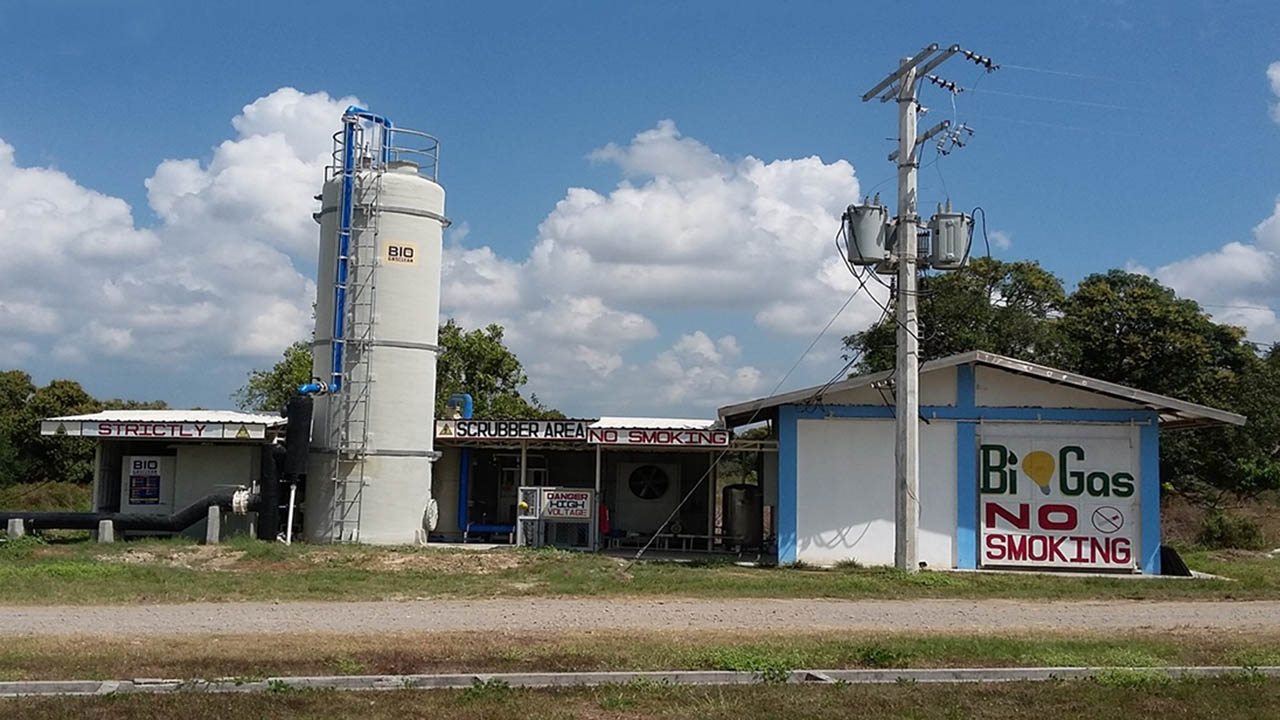Universal Robina Corporation, one of the Philippines’ largest food firms, has been leading initiatives in the use of more climate- and environment-friendly energy sources with its long-running drive to power its farms with biogas.
The company’s Agro-Industrial Group (AIG) and the Sugar and Renewables Group (SURE) have, for years, been using manure, agricultural and food waste, and other organic materials as sources of renewable energy.
Since 2015, AIG has generated over 600 megawatts each year at its poultry farm in Naic, Cavite, and its pig farm in San Miguel, Bulacan, using biogas.
 Universal Robina Corporation Agro-Industrial Group’s biogas facility in Naic, Cavite.
Universal Robina Corporation Agro-Industrial Group’s biogas facility in Naic, Cavite.
SURE, meanwhile, kept the biogas program in place when it took over the assets of Roxas Holdings, Inc. in La Carlota City, Negros Occidental, in 2020.
“These efforts are part of URC’s overall push towards reaching its ‘net zero’ goal by 2050, by sourcing its energy needs from power producers that use renewable sources,” said Irwin Lee, URC president and chief executive officer.
Net zero means balancing the amount of greenhouse gases (GHG) the company emits with the amount it removes from the planet’s atmosphere. This commitment will support the Philippines’ pledge to the Paris Agreement on Climate Change, which aims to reach carbon neutrality by 2050 and to reduce the country’s GHG emissions by 75% by 2030 as part of its Nationally Determined Contribution.
“Our aim is to have all our plants utilize electricity from 100% renewable energy within the decade. We’re working with energy providers, and within our own facilities, to achieve this as soon as possible,” Lee said.
AIG’s sprawling poultry farm in Naic provides more than enough chicken dung to power a 270 kilovolt ampere (kVA) generator.
Similarly, the pig farm in Bulacan can power two 500 kVA generators from its biogas output.
Each day, animal waste is collected and stored in covered anaerobic tanks. It is in these tanks where digestion of organic matter begins—microbes feed on organic matter, such as protein, carbohydrates and lipids, to produce biogas. During the digestion process, solids are then exhumed and used as soil enrichers or fertilizer.
Biogas has displaced up to 40% of URC SURE’s solid fuel needs at its La Carlota Distillery.
The company also uses biomass to power its boilers. Bagasse, a fibrous waste material extracted from sugarcane, is fed to boilers to produce electricity, which powers mill operations at all SURE sugar mills in the country.
In 2021, a total of 871,000 gigajoules of energy was produced from the use of biomass and biogas.
Last February, URC’s Branded Consumer Foods Group began sourcing its energy needs from power producers that use renewable sources.
URC signed an agreement with MPower/Vantage Energy, Bac-Man, and First Gen to supply at least 18 of its facilities in Luzon and two more in the Visayas with geothermal, solar, and hydro energy.
These include factories in Pasig, Laguna, Cavite, Pampanga, Antipolo and Bulacan, as well as facilities in Cebu and Negros Occidental.
These initiatives are in support of the United Nation’s Sustainable Development Goal 13 (Climate Action), which seeks to combat climate change and address its impacts.
For more information on URC, visit urc.com.ph


